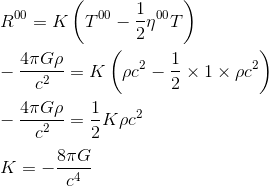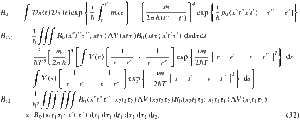 When Daxx began working as a theoretical physicist, gravity had been solved. It was spacetime curvature. Time itself was a relative thing, depending on where you were in a gravity well or how fast you were travelling. The discrete nature of the constituents of the universe had been well described. They also had odd properties that depended on the observer. Both theories had been proved correct within their own domains, but they could not be reconciled.
When Daxx began working as a theoretical physicist, gravity had been solved. It was spacetime curvature. Time itself was a relative thing, depending on where you were in a gravity well or how fast you were travelling. The discrete nature of the constituents of the universe had been well described. They also had odd properties that depended on the observer. Both theories had been proved correct within their own domains, but they could not be reconciled.
Physicists had begun thinking about multi-dimensional mathematical descriptions of the universe. None of the descriptions had been successful. No proposed theory could describe the universe from tiny to immense structures by a single set of elegant equations, and produce verifiable predictions.

Daxx was able to do that. As with many great discoveries, it was serendipitous.
Daxx had an eclectic scientific interest. As well as theoretical physics and applied mathematics, he also had an unusual interest in pure mathematics, especially number theory. As a child he puzzled over prime numbers; he was fascinated by their seemingly random existence. A prime number was not known until it was, well, discovered. They couldn’t be derived.
He began by writing in his school book (this was a Tier-One class, remember, so the students were introduced to writing) all the prime numbers he knew and over time extended the list. He had pages of prime number calculations. Each new number was a school boy’s triumph. He was determined to be the first to discover some pattern in prime numbers. There had to be, he thought. The universe would not leave to pure randomness such an important, and beautiful, concept.
He was wrong, of course. Prime numbers are random. But he was right to think of them as an important concept.
Daxx was an expert in both the discrete and continuous nature of the universe. He became well known, among his peers, as the foremost authority in both fields of endeavour. That was unusual. The most skilled physicists on the planet had difficulty remaining at the forefront of one of those areas of research. Daxx did both. And he also published regular research advances in pure mathematics.
It was the wide range of his interests and his intellect that gave him the answer to be able to elegantly describe how the universe was constructed.
He had published inelegant, multi-dimensional theories like everyone else in their attempts to unify the field equations. He didn’t like them. The mathematics for those wrapped up dimensions had, sort of, worked out, but it was ugly and complex. He hated that. He began thinking of orthogonality instead of attempting to wrap up invisible (and unmeasurable and clumsy) extra dimensions within a single spacetime of three physical dimensions and one time dimension. His thinking seemed to be promising. Each spacetime had more physical dimensions, perhaps even time dimensions as well. It still didn’t produce measurable results, but he liked the elegance of it.
He tinkered with the mathematics, beginning with a series of three spacetimes. A single physical dimensioned one, which well approximated the reigning paradigm that elementary particles could be described by a single dimensioned string. He added a second in the series of orthogonal spacetimes. This one with two physical dimensions. Then, of course, there had to be the spacetime he experienced, with three physical dimensions.
He played with the time element. A single, universal time across all the elements of the series did not allow for a limit when the series was summed, no matter the coefficients of each term. It was not physical. He allowed each orthogonal spacetime in the series to have its own, separate time dimension. That limit diverged even further.
Daxx played with non-linear time elements, each dependent on the time dimension of lower spacetimes in the series. He worked backwards from a known result and discovered there was a non-linear connection between the various time elements. He had made physical assumptions, and the mathematics seemed to fall out quite easily. He was euphoric. But it wasn’t a solution. It was an approximation that quickly diverged from reality; it differed from important experimental results.
The mathematics was awesome. The physics was crap.
Daxx put it to one side and worked on other things.
One evening he was tidying up his apartment. He did that a lot. He came across his old workbooks from school. He smiled at the pages and pages of prime number calculations. He almost fell over with the insight when it hit him. He dropped the workbook to the floor.
Prime numbers were an intrinsic part of the universe. He knew that already, as all mathematicians did, but prime numbers were an intrinsic part of the physical universe, not only the platonic. His series of orthogonal spacetime elements had begun the series of prime numbers, 1, 2, 3, for the spatial dimensions. What if that series of orthogonal space dimensions continued the prime number count?
He opened his display, right there with his old school workbook still on the floor where he had dropped it. He keyed in the first dozen or so prime numbers, right from his childhood workbook, on his knees, on his study floor. He ran the calculations. He performed simulations.
An infinite series of orthogonal spacetimes with the number of physical dimensions determined by prime numbers tended to a limit. That limit described the universe and its constituents and its fields.
Simultaneity popped out of the equations as an incredibly weird concept. The non-linearity of the time dimensions meant that simultaneity itself was relative, not just within a gravity well, not just dependent on the observer’s speed but also could be affected by higher terms in the series.
Time just got very weird.
However, it was a mathematical concept. There was no way, that Daxx could see, for the related and semi-dependent time dimensions to physically interact. Lower ones were contained within higher ones. The space elements were orthogonal, which meant, Daxx thought, higher ones could never be physically examined. Time was safe and could be restricted to its normal weirdness, as observed in his four dimensioned spacetime.
The infinite series Daxx discovered was a superset of both the continuous and discrete explanations of the universe. It described all experimental observations, and it made its own verifiable predictions.
The universe had been described by Daxx. And then Janna discovered the fungus with odd energy conservation problems. The higher orthogonal spacetimes were real manifestations of the universe and could be reached.
Time, again, got really weird.